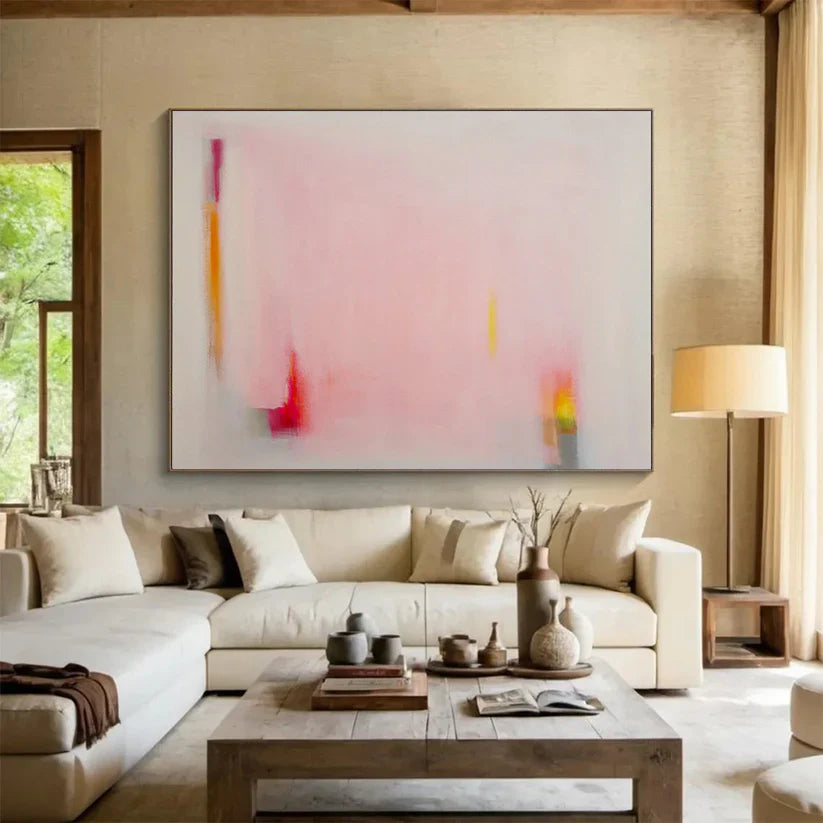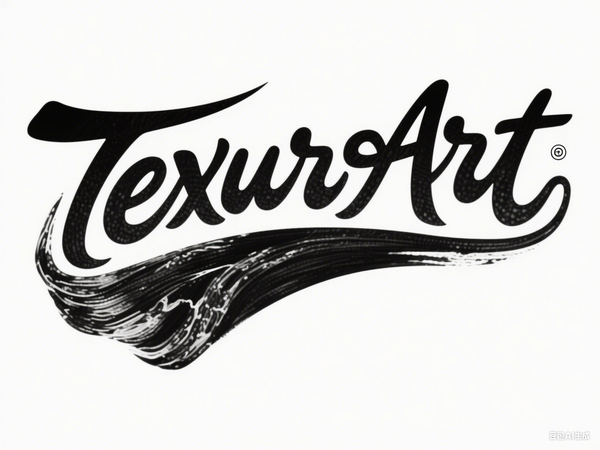
The Allure of Pink Abstract Painting: A Symphony of Emotion and Form
Share
In the vibrant world of contemporary art, few elements captivate the imagination quite like the delicate yet powerful hue of pink. When infused into abstract compositions, pink transforms from a mere color into a profound medium of expression, evoking emotions ranging from tender serenity to bold passion. This exploration delves into the essence of Pink Abstract Painting, uncovering its historical roots, artistic techniques, and enduring appeal in modern interiors. As a genre that defies literal representation, pink abstract works invite viewers to engage on a personal level, where swirls of rose, magenta, and blush become portals to inner landscapes. Through this 1500-word journey, we will examine how pink's softness contrasts with abstraction's freedom, creating pieces that resonate in homes, galleries, and creative spaces alike.
The origins of abstract painting trace back to the early 20th century, a time when artists sought to break free from the constraints of realism. Pioneers like Wassily Kandinsky and Kazimir Malevich experimented with non-representational forms, emphasizing color and shape as standalone elements. Pink, often associated with femininity and subtlety, emerged as a subtle rebel in this movement. In the broader context of abstract art, as detailed by renowned institutions, pink's inclusion added layers of emotional depth, softening the stark geometries of early abstractions while amplifying their expressive potential. Artists drew from nature's fleeting moments—sunsets, blooming flowers, or the flush of dawn—to infuse their canvases with pink tones that suggested rather than depicted.

As abstraction evolved, the post-World War II era saw the rise of Abstract Expressionism, a movement where color became a vehicle for subconscious exploration. Painters like Mark Rothko and Helen Frankenthaler employed vast fields of color, including pinks, to evoke sublime experiences. Rothko's luminous rectangles, often layered with translucent pinks, aimed to stir profound feelings, blurring the line between viewer and artwork. Frankenthaler, with her soak-stain technique, allowed pigments to bleed into the canvas, creating ethereal pink washes that mimicked emotional fluidity. These innovations highlighted pink's versatility: it could whisper tranquility or scream intensity, depending on saturation and context. In pink abstract painting, this duality allows for interpretations that range from romantic introspection to feminist statements, challenging traditional color associations.
Technically, creating a pink abstract painting involves a dance between intention and spontaneity. Artists often begin with a base layer of white or neutral tones, building up pinks through glazing or impasto methods. Acrylics and oils are favored for their blending capabilities, enabling smooth gradients from pale pastels to vibrant fuchsias. Texture plays a crucial role; palette knives create ridges that catch light, adding dimension to the flat plane. Compositionally, pink abstracts frequently employ asymmetry, with swirling forms or geometric interruptions to guide the eye. The color pink itself, derived from mixing red and white, symbolizes harmony and balance, making it ideal for abstractions that explore unity amid chaos. Influences from abstract art history underscore how pink has been used to convey spirituality and purity, as seen in the works of early modernists who viewed color as a spiritual language.
Contemporary artists continue to push the boundaries of pink abstract painting, integrating digital elements and mixed media for fresh interpretations. For instance, some incorporate metallic pinks or fluorescent accents to evoke futuristic vibes, while others draw from pop culture, blending pink with urban motifs. The appeal lies in its adaptability; a pink abstract can soften a minimalist loft or energize a cozy bedroom. In therapeutic contexts, these paintings promote mindfulness, their ambiguous forms encouraging meditation and self-reflection. Galleries worldwide showcase pink abstracts, recognizing their market demand among collectors who seek emotional resonance over narrative clarity.
One cannot discuss pink abstract painting without acknowledging its role in interior design. These works serve as focal points, their gentle hues complementing neutral palettes while adding warmth. In Scandinavian-inspired spaces, a large pink abstract might contrast cool grays, creating visual interest. For bohemian aesthetics, layered pinks with earthy undertones foster a sense of wanderlust. The versatility extends to commercial settings, where pink abstracts adorn hotel lobbies or wellness centers, promoting calm and creativity. As part of broader art collections, these pieces highlight the enduring legacy of abstraction, offering accessible entry points for novice enthusiasts.
The emotional impact of pink abstract painting is perhaps its most compelling attribute. Pink evokes associations with love, compassion, and playfulness, yet in abstraction, it transcends clichés. A canvas dominated by swirling pinks might represent inner turmoil resolved through harmony, or the joy of unbound creativity. Viewers often report a sense of upliftment, as the color's softness invites prolonged gazing. In educational resources exploring Abstract Expressionism, the emphasis on process over product resonates with pink's fluid application, where each brushstroke captures a moment of artistic vulnerability.

Artists specializing in pink abstracts often share journeys rooted in personal discovery. Consider a hypothetical creator like Elena Voss, who transitioned from figurative portraits to abstraction after a life-altering trip to the Himalayas. Inspired by the pink hues of mountain sunrises, Voss developed a signature style blending soft pinks with metallic sheens, symbolizing enlightenment. Her ideology centers on "color as emotion," viewing pink as a bridge between the physical and metaphysical. Voss's process involves intuitive layering, allowing the canvas to evolve organically, much like life's unpredictable paths. Exhibitions of her work emphasize accessibility, encouraging viewers to find their own narratives within the pinks.
In the digital age, pink abstract painting has found new life through online platforms, where high-resolution reproductions make art democratic. Collectors can browse collections tailored to themes, selecting pieces that align with personal vibes. Customer testimonials often highlight transformative experiences. For example, interior designer Laura Bennett shares, "Incorporating a pink abstract into my client's living room brought an unexpected warmth; it's like the room breathes with emotion now." Similarly, art enthusiast James Harlow notes, "My pink abstract purchase was a game-changer for my home office—its subtle energy keeps me inspired during long days." Another buyer, Sophia Ramirez, adds, "As someone drawn to feminine aesthetics, this pink piece feels empowering, turning my space into a sanctuary of self-expression."
The market for pink abstract painting continues to grow, driven by trends in wellness and personalization. Sustainable practices, such as using eco-friendly pigments, appeal to conscious consumers. Collaborations between artists and designers yield limited-edition series, blending art with functionality. In therapeutic art programs, pink abstracts aid in stress reduction, their calming tones facilitating emotional release.
Ultimately, pink abstract painting stands as a testament to art's power to evoke without words. Its blend of color and form creates timeless dialogues, inviting endless reinterpretations. Whether adorning a wall or sparking conversation, these works remind us of abstraction's beauty: the freedom to feel without boundaries.
(Word count: 1528)
FAQ
What makes pink abstract painting unique? Pink abstract painting stands out due to its emotional depth, combining the softness of pink with the freedom of abstraction to evoke personal interpretations.
How can I incorporate a pink abstract into my home decor? These paintings work well as statement pieces in living rooms or bedrooms, complementing neutral tones for a balanced, inviting atmosphere.
Are pink abstract paintings suitable for all art styles? Yes, their versatility allows them to fit minimalist, bohemian, or contemporary styles, adding warmth and visual interest.
What materials are commonly used in pink abstract paintings? Artists often use oils, acrylics, or mixed media on canvas to achieve vibrant pinks and textured effects.
Can pink abstract paintings appreciate in value? Many do, especially originals from emerging artists, as the abstract market continues to expand globally.
